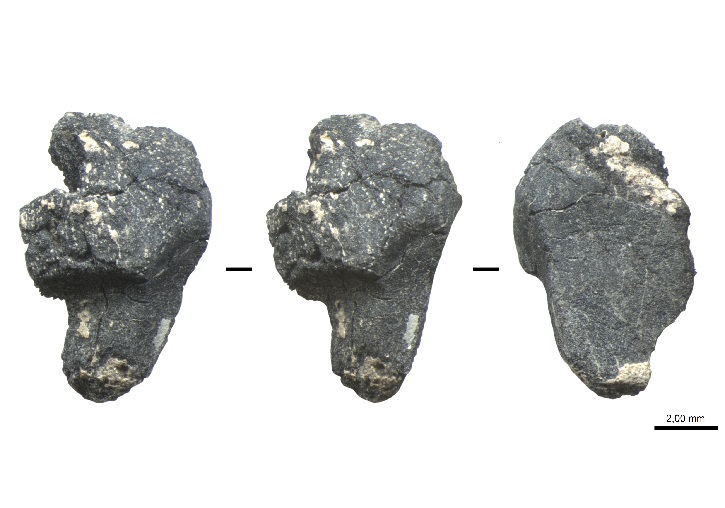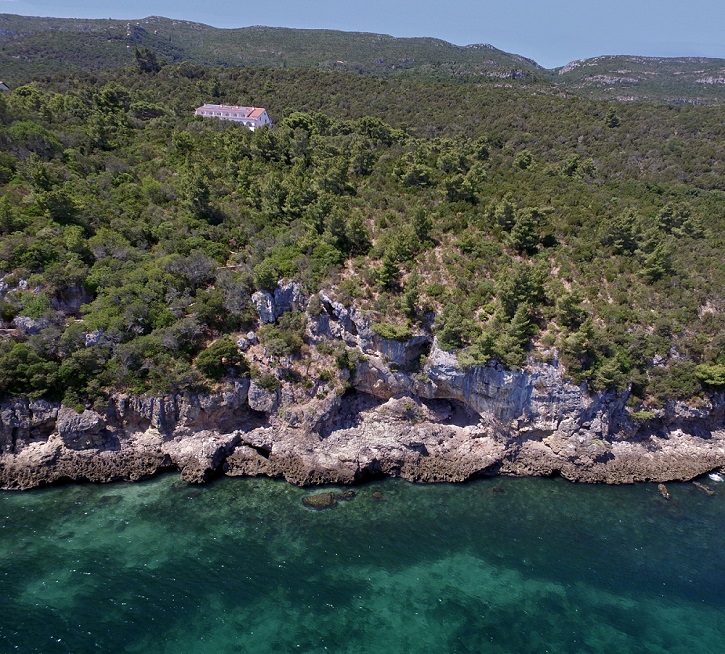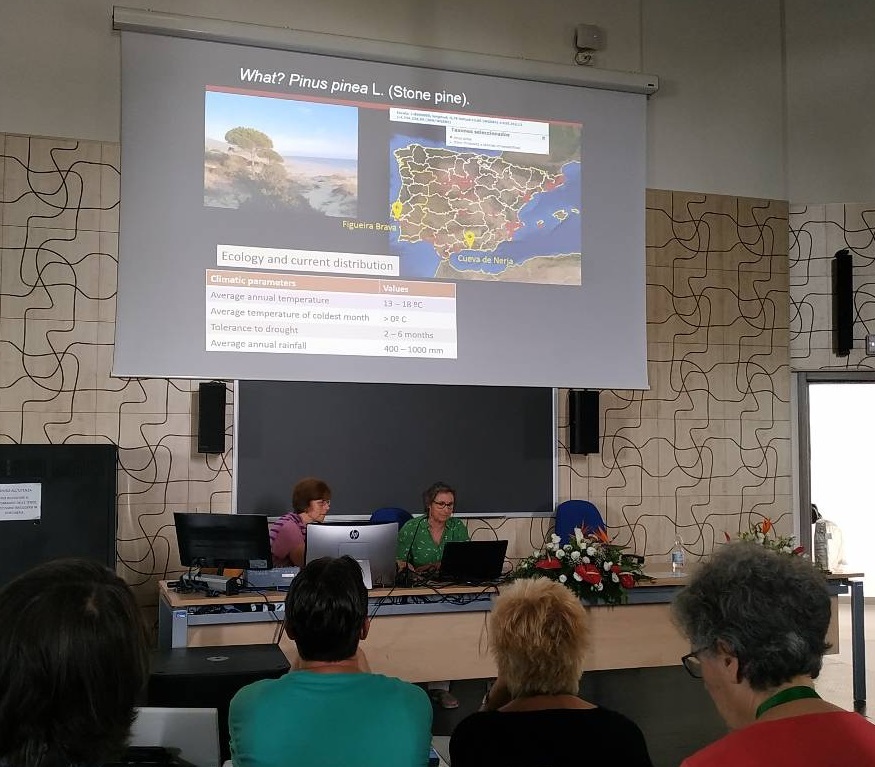European Neanderthals were intensively exploiting marine resources a hundred thousand years ago
- Scientific Culture and Innovation Unit
- March 27th, 2020

Ernestina Badal, professor at the Department of Prehistory, Archeology and Ancient History at the University of Valencia, has participated in research published today in the prestigious journal Science that confirms that fishing and shellfishing contributed significantly to the subsistence economy of European Neanderthals about 100,000 years ago. The work, in the Portuguese cave of Figueira Brava, proofs that the human relationship with the sea and with it the appearance of a symbolic material culture are earlier than previously believed.
“Our work, focused on the archeobotany of the site, has contributed to understanding the use of plant resources by the Neanderthals of Figueira Brava. Specifically, the collection and processing of stone pine cones for nutritional purposes is proven. The pine nuts are fruits rich in fatty acids with a high nutritional value and were obtained by roasting the pineapples, which in turn shows that they had perfect fire control at all stages of combustion”, Ernestina Badal highlighted.
The study led by João Zilhão, a researcher at the Catalan Institution for Research and Advanced Studies (ICREA), explains that the settlement was used as shelter by Neanderthal populations throughout the twenty millennia between 86 and 106 thousand years ago, in the last interglacial period and when the Earth’s climate was similar to the current one. The archaeological traces found –ashes, coals and other vestiges of an intensive use of fire, quartz and flint tools, food remains– are abundant. The carbon analysis shows the existence of stone pine forests on the coasts of Figueira Brava.
Currently, the Figueira Brava cave (located on the slopes of the Serra da Arrábida, about 30 km south of Lisbon, on the outskirts of the Sado River estuary) is located on the seashore, but at the time when it was inhabited the distance varied between 750 and more than 2,000 meters. Its occupants consumed mollusks, crustaceans, fish, waterfowl, and mammals. This basket of animal products from the coast, the Neanderthals of Figueira Brava complemented it with the hunting of deer, goats, horses, uros and also of small prey such as the land turtle.
According to Ernestina Badal, among the remains of charred plants it has been possible to determine the olive tree, the vine, the fig tree and other species typical of a Mediterranean climate. The most abundant is the stone pine. Its wood was used as fuel, and there are also needles, pineapple flakes and, above all, pine nut shells. In addition, the ripe pinecones, but still closed, were collected from the branches and stored in the cave, where they were opened to the heat of the fire to extract, and eat, the pine nuts.
The research highlights that the diversity of resources documented in Figueira Brava is superior to that of the sites of the regional Mesolithic, the so-called Sado shell-middens, dated between 7,500 and 9,000 years ago. In Figueira Brava, at the times of greatest occupation, the density and structure of the accumulations of mollusk remains are identical to those observed in the shell-midden. The latter contain hundreds of burials, the isotopic analysis of which has confirmed that such a significant quantity of archaeological remains corresponds to a food diet with a prominent marine component, which can be as much as 50%. Research suggests that this would also have been the case for Neanderthal populations on the Iberian Atlantic coast.
The work now published means a rethinking of the research published to date. If, among Neanderthals in Europe and Asia, until now there was little indication that shellfish harvesting, fishing, and seal hunting were routinely practiced by coastal populations, the evidence for this among their anatomically modern contemporaries in South Africa is well known. Based on this contrast, a very influential model of human origins suggests that the regular consumption of aquatic resources –rich in Omega 3 and other fatty acids that favour the development of brain tissues– would have provided an increase in the cognitive abilities of African populations of the last interglacial period.
This increase would explain the early appearance, among them, of a symbolic material culture: body painting with ocher, use of pendants, decoration with geometric motifs of containers made from ostrich eggs. These behaviours reflect a capacity for abstract thought and symbolic communication identical to today and would have led to the emergence of more organised and complex societies whose demographic growth ended up leading to the colonisation of Eurasia.
Symbolic material culture
In this regard, evidence has accumulated over the past decade that Neanderthals possessed a symbolic material culture. Two years ago, the magazines Science and Science Advances published two works co-directed by João Zilhão in which it was shown that more than 65,000 years ago, Neanderthals painted parietal motifs in at least three caves on the Iberian Peninsula (La Pasiega, Maltravieso and Ardales), and that the perforated and painted shells of Cueva de los Aviones (Cartagena, Murcia) are between 115,000 and 120,000 years old. These results showed that they had rock art, used sophisticated pigment mixtures and Neanderthals practiced body ornamentation even earlier than what has been documented among the first anatomically modern humans in Africa.
The results of the Figueira Brava excavation add that, if the regular consumption of marine resources played an important role in the development of cognitive abilities, then it did so on the scale of humanity as a whole. In fact, depending on the comparison parameter used, the density of aquatic resources in the reservoir is within or above the range of variation observed in contemporary South African reservoirs.
Human familiarity with the sea
Figueira Brava’s study also confirms the familiarity of humans with the sea and its resources is a much older and more extended fact than previously thought. This possibly helps explain how it was possible that between 45,000 and 50,000 years ago, humans crossed the Timor Strait to colonise Australia and New Guinea.
This study also concludes that the concept of Neanderthals as cold peoples, specialised in hunting large herbivores, results from a bias created by the history of research, since they were the countries of central and northern Europe such as France and Germany the pioneers in the development of paleolithic archeology. However, in Neanderthal times, the vast majority of today’s human population in Europe lived in the south, especially in what is now Italy and, above all, in the Iberian Peninsula, where research began later and only in the last few years. 25 years has been able to start producing results continuously and consistently.
Article:
«Last Interglacial Iberian Neandertals as fisher-hunter-gatherers». Zilhão et al., Science 367, eaaz7943 (2020) 27 March 2020
Photo captions:
1. Figueira Brava Cave, in the Sado River estuary, about 30 kilometers south of Lisbon.
2. Ernestina Badal, professor at the Department of Prehistory, Archeology and Ancient History at the University of Valencia, presenting the results of Figueira Brava in Italy.




















